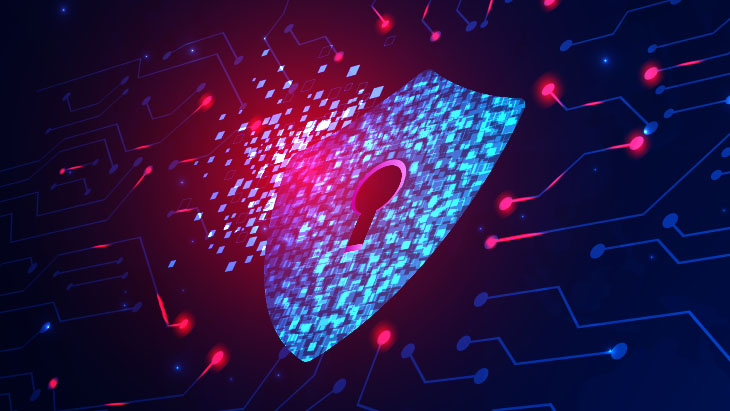
Prioritizing Cybersecurity in the Age of Digital Transformation
While digital transformation creates significant changes in life practices and brings some important advantages for organizations, it also creates a series of new threats. Digital transformation results in an unusually large threat surface and increased cybersecurity risks for organizations due to its nature, which makes it not a choice but a necessity to attach importance to cybersecurity. But in this age, it is not enough to prioritize cybersecurity alone to protect the critical data stacks of your organization.
You need a systematic and strategic approach that can encompass the complexity of the threat landscape, offer alternative solutions, and prioritize specific defense plans. In other words, the cybersecurity strategy you implement must be built on a systematic approach that is planned in detail and is open to integration with different security applications.
It is useful to look at the statistics to understand the size of the sensitive data flow and why the issue of data security is so important. According to the latest data, more than 5.5 billion searches are made on Google per day. In the age of digital transformation, it is a critical point that the business world needs to be more aware of threats, especially when the data flow has become so intense. Furthermore, in a survey conducted with some decision-makers in the business world in 2019, only 37% of the people in the sample stated that they see cybersecurity risks and the access security problems they cause as a threat.*
This is why it is so important to prioritize cybersecurity and create cybersecurity awareness for organizations.
Raise Awareness on Cybersecurity
Cybersecurity is not just about taking the best security measures and building an advanced IT infrastructure. It is also extremely important to carry out activities that will increase the awareness of cybersecurity within the organization and provide training to the employees in this matter. An organization that has developed cybersecurity awareness and has embedded the transformation created by the digital age in its corporate memory has the following components:
- Written information security plan: It includes the security policies, objectives, and priorities that organizations should follow on issues such as cybersecurity measures and privileged access management. It also includes guidelines for network security, corporate e-mail, social media, and internet usage. When you encounter a cyber attack, official institutions investigating the incident request your written information security plan.
- Asset and sensitive data inventory: It helps you control where sensitive data is stored and who has authorized access to that data.
- Access control: This allows you to limit access to servers, IT infrastructure, and critical data to specific employees.
- Employee training programs: Workshops, seminars, or various training programs are perfect for raising awareness about cybersecurity among employees.
On the other hand, it is useful to clearly define roles and responsibilities within the organization about cybersecurity to increase awareness.
- You must share needs and concerns with employees in different departments
- Define the job descriptions of the IT team correctly
- Identify critical assets that need to be protected for the sustainability of the workflow
- Determine targets and budgets for cybersecurity infrastructure
- Check for security vulnerabilities
- Manage cybersecurity operations in a coordinated manner and measure the return on your cybersecurity investment
Thus, you can change the perspective on cybersecurity within the organization and meet your employees on common ground in this context.
Create Security Measures
In the age of digital transformation, the first thing you need to do to protect critical data is to develop a cybersecurity strategy based on different security principles, such as Zero Trust or/and Least Privilege. For example, with the following suggestions, you can take the first step to create a cyber strategy around the Zero Trust principle.
Password and authentication: The first way to access sensitive data is to access the passwords. Use a system that automatically changes passwords and can perform multi-factor authentication to prevent cyber attackers from accessing privileged accounts and their passwords in your organization.
Do not open unknown e-mails: Do not open unaccredited e-mails so you don’t become the victim of phishing attacks. Do not forget to provide the necessary training to your employees so that they do not open these e-mails.
VPN for remote access: Create private networks via VPN on connections you provide with remote access. VPNs can provide a channel for your organization to access the private network, but it is important to understand that VPN applications are not a sufficient security measure on their own. Combining these with various access security solutions such as privileged access management, will enhance your security posture to a higher level.
Third-party security: Make sure that third-party people and organizations involved in your workflow are secure. Their cybersecurity vulnerabilities may cause you damage in terms of authorized access security.
Support Security Measures with Different Approaches
When it comes to data and access security, Zero Trust is a cybersecurity approach based on the motto “Never trust, always verify” to establish security amid the digital transformation storm. Compared to the old approaches based on building a safe environment, today's cyber attack techniques have proven that the ideal safe environment is impossible to achieve. Therefore, adopting a Zero Trust approach stands out as the best solution.
- Adopting a new approach institutionally: At the heart of Zero Trust lies a three-dimensional cybersecurity approach consisting of data loss prevention (DLP), identity access and management (IAM), and security information and event monitoring (SIEM). In addition, risk analysis and compliance management processes are also part of this approach.
- The right people: It is very important that you build the right team. As cybersecurity threats become complex, you need experts in every field. There are very few organizations that can afford it. For this reason, it may make sense to create a security operations center (SOC) with critical resources and resort to outsourcing for other IT teams.
- Accurate metrics: One of the most important parts of an advanced cybersecurity strategy is to monitor the system with correct metrics. Accordingly, IT teams need to create a standard dataset to measure the amount of suspicious network traffic, detect updated systems, and audit access.
Ensure Access Security with Privileged Access Management Solutions
With Privileged Access Management (PAM) solutions, you can easily apply the Zero Trust approach. PAM solutions enable you to provide access security, control privileged accounts one by one, allocate end-to-end password security, monitor your IT infrastructure 24/7, record all transactions, and audit each authorized access. Thus, you can transform your infrastructure and make it compliant with the zero-trust model, more secure against ransomware attacks, malware, or phishing attacks.
Single Connect, our Privileged Access Management solution, enables you to have an advanced cybersecurity infrastructure with the modules it contains. Allowing you to adopt the Zero Trust approach with its Dynamic Password Controller, Two-Factor Authentication, Privileged Session Manager, Database Access Manager, Dynamic Data Masking and Privileged Task Automation modules, Single Connect offers solutions for different cybersecurity risks.
Single Connect secures your IT infrastructure against internal and external security breaches, faulty engineering activities, control of multi-vendor and maintenance support services, and malware infecting privileged accounts.
Allowing you to comply with national/international regulations such as KVKK, GDPR, PCI, ISO 27002, and DSS, Single Connect can also provide protection to companies of all sizes when it comes to data and access security. You can contact us to get more detailed information about Single Connect, which proved its success by being included in the Omdia 2021-22 PAM Solutions report as one of the leader solutions.
* 2019 Decision Maker 1H Pulse Survey
Other Blogs













